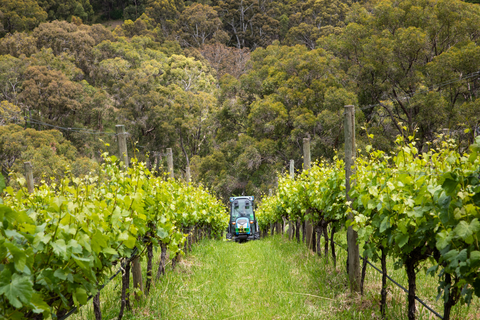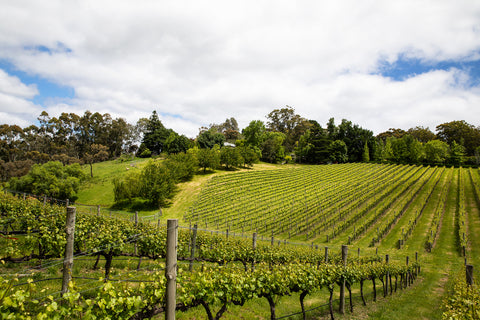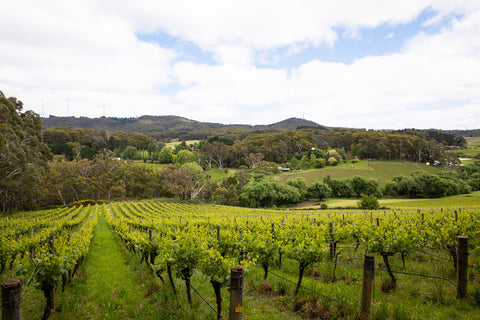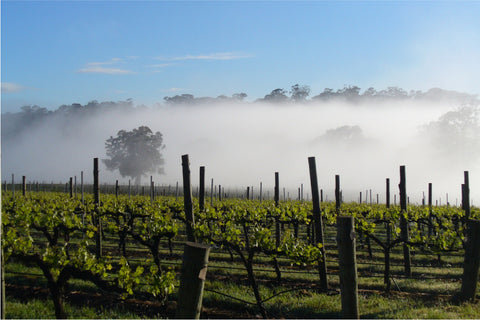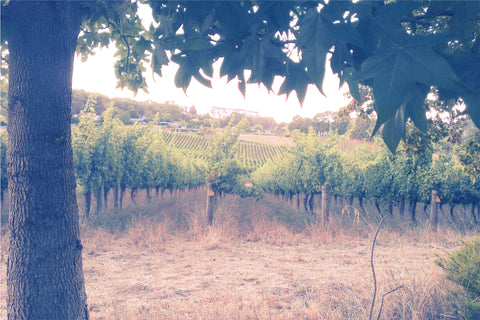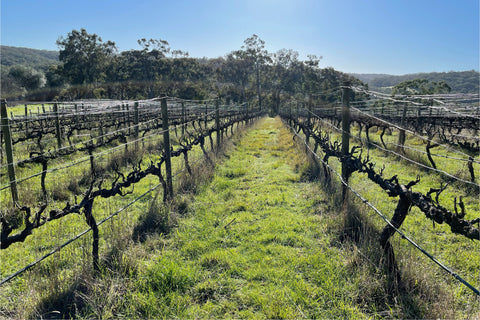Vineyards & Farming
The Adelaide Hills
Our region is located in the Mount Lofty Ranges east of Adelaide, the capital city of South Australia. The Mount Lofty Ranges are estimated to have been elevated and formed over 70 million years ago during the late Cretaceous period. The initial formations of the region are believed to be from the Cambrian era, over 485 million years ago. The major type of rock of the regions are sedimentary with sandstone the dominate type with varying degrees of quartz, schist and ironstone also being present.
The region stretches across a narrow band approximately 70km long with the highest vineyards being situated between 500-650 metres in altitude. Our summers are warm and dry, but the winters are cold and wet with some areas (e.g. Summertown and Piccadilly) averaging over 1000 mm of rainfall annually. Our elevation is particularly beneficial around the final stages of ripening when colour and flavour compounds are enhanced by the cooler nighttime conditions we experience.
There were vines planted in the Adelaide Hills as early as the 1870s but due to the challenges of cool-climate viticulture in those early days, most vines were removed by the 1930s. The rebirth of the Adelaide Hills region started in 1970s and gained pace with the rise in popularity of cool climate wines in the 1990s. We are lucky to have landed in this beautiful part of the world and look forward to the continued rise in prominence of our region in the story of Australian wine.
Our Farming Philosophy
We love the forests and rivers of our beautiful region and hope they will be there for many more generations. With this in mind, we farm our vineyards organically with some bio-dynamic preparations used throughout the year. We also make use of green manure/ flowering cover crops, grazing animals and various organic fertilizers to help keep our vines and soils happy and healthy. Our growing season occurs from Sept to April each year with a few months in the middle for some rest and winter pruning. Undervine management involves a number of tools and depending on the site or time of year, we either mow or cultivate. The vines are thinned, tucked, straightened and hedged as needed and the grapes are harvested by hand in the cool mornings. We welcome you to visit us and our vineyards if you ever wish to learn more.



